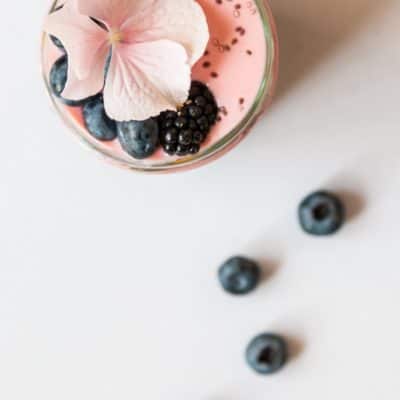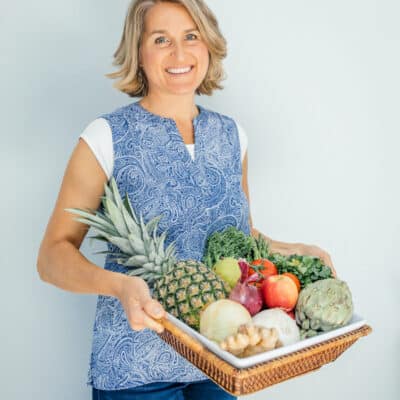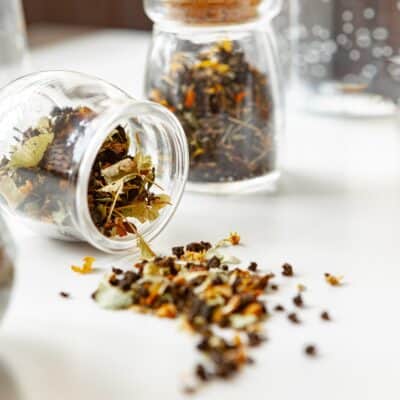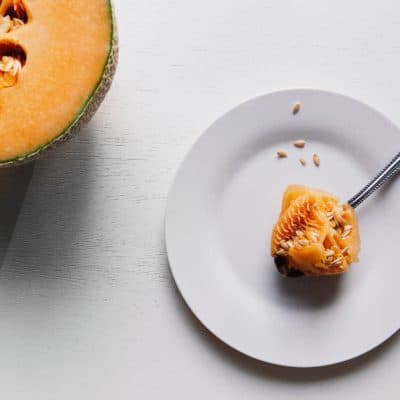If you’re health conscious, you probably already try to eat more fruits and vegetables. Research shows doing so increases your happiness too. Not to mention that eating more fruits and vegetables will hydrate you, flood you with immune-boosting vitamins and minerals, keep your systems moving with loads of fiber, detoxify your system, boost your heart health, and keep your lymph healthy.
Here’s the catch. Where some people curb their costs, however, is eating non-organic. The problem comes here: You may gain health benefits by eating more greens, but you’ll also be taking in more pesticides which can have dramatic health consequences.
By choosing organic, you will be actually curbing your healthcare costs – significantly. Research shows pesticides disrupt your endocrine system, may lead to ADHD and other neurobehavioral damage, impact semen quality, respiratory problems, Parkinson’s disease, autism, heart disease, suicidal thoughts, lower IQ, ALS, and cancer, to name a few. No laughing matter at all. Besides, you can’t put a price tag on your vitality, energy, health and well-being.
As a mother who has to budget feeding an entire family of 5 (all male except for me – read: big appetites!) on organic plant-based foods, these are my best tips for making it work:
Know your Dirty Dozen vs. The Clean Fifteen.
Research has found that some fruits and vegetables are highly concentrated in pesticides, whereas others tend to be “cleaner” of pesticide residue. Apples, strawberries, and grapes, for example, are heavily sprayed. Avocados, on the other hand, can often be perfectly safe (probably due to their thick skin). Check out the Dirty Dozen and Clean Fifteen and buy accordingly if you want to save money on organic food or don’t have easy access to it. Here’s the 2017 list (for more details, check out Environmental Working Group)
Dirty Dozen:
- Strawberries
- Spinach
- Nectarines
- Apples
- Peaches
- Celery
- Grapes
- Pears
- Cherries
- Tomatoes
- Sweet bell peppers
- Potatoes
Clean Fifteen:
- Sweet corn (if you’re not buying organic, make sure it’s non-GMO corn!)
- Avocados
- Pineapples
- Cabbage
- Onions
- Frozen sweet peas
- Papayas
- Asparagus
- Mangoes
- Eggplant
- Honeydew
- Kiwifruit
- Cantaloupe
- Cauliflower
- Grapefruit
Buy Locally
I love heading to the farmer’s market, farm stands or small grocery stores that source locally. Think about it, whenever you buy locally, you are probably saving costs: you’re not paying for overhead from shipping, etc… I usually find huge amounts of affordable kale at the farmer’s market.
Buy in Season
What’s in season is more abundant. You’ll notice that seasonal fruit and vegetables (e.g. melons in the summer) are generally fresher looking and more abundant. They’ll also be cheaper and sometimes even on sale!
Buy On Sale
Go to your local store and find the organic items that are on sale, stock up!
Freeze
We often stop ourselves from buying sale produce in bulk because it could go bad. Here’s my busy mom trick: I take it home and freeze what I’m not going to use right away. Buy a 20 pound box of apricots at your farmer’s market on summer sale, for example. Cut them up when you get home and throw them in your freezer: Use in smoothies, in baking, make salad dressings, sauces etc.. all year around while they last.
Garden (even if you have no time or backyard)
If you have a backyard and time on your hands, by all means, get your hands in the dirt. If you’re urban, try a community garden. For the rest of us who might have smaller spaces or less time, there are still some great options. Basil, cilantro, parsley, and mint can easily be grown in a pot in your background or on your windowsill and they are super nutritious. Tomatoes tend to do well, apple trees do well in most climates, and of course, if you’re in a sunny area, those lemon, orange and grapefruit trees can reap an abundance of fruit.
Meal-Plan After Your Shopping
Most people plan meals and then go shopping. They’re stuck buying the ingredients whether they’re expensive or not. Here’s what I do: I plan my meals after shopping, not before so I can base it on what’s on sale or affordable. Then I bring my produce home and decide what’s for dinner.
Buy in Bulk
I love to buy in Bulk on Amazon – especially for key staples that are great protein and nutrient-packed organic fillers for my family: black quinoa, forbidden rice, chia seeds, buckwheat, millet, raw unpasteurized almonds, raw sesame seeds, and raw sunflower seeds. You can buy gluten-free oatmeal or steel-cut oats. If you do a lot of baking, raw sugar cane and raw organic honey can be purchased in bulk as well as some cooking oils. (My favorite is wheat germ oil!)
If you buy things in bulk, you can make meals easily with ingredients you have on hand. For example a fiesta salad with lettuce, onions, red peppers, cilantro topped with forbidden rice. Tasty and economical!
Buy Frozen
Buy bulk frozen items at Costco or Sam’s Club. I love going for the frozen organic fruit. Get a freezer in your garage and load it up. You can make smoothies, popsicles etc… Great treats for the summer.
Make things from scratch
You don’t have to buy processed organic foods – make them yourself. It’s much easier than you think when you have your bulk ingredients. Quinoa tortillas are very inexpensive to make at home and it’s very simple. Muffin recipes are great. Freeze what you don’t use.
Here’s my awesome recipe for quinoa tortillas:
- Soak 2 or 3 cups of black quinoa (or half quinoa/millet) for 2-6 hours
- Rinse, blend, and add a couple cloves of garlic,salt/pepper and whatever herb you like for flavor
- Add less than 1 teaspoon of oil to blender & just enough water to cover the quinoa in the blender. Blend.
- Throw the mixture onto the skillet with oil to make a really thin pancake. For a superfood “taco meat,” sautée onion, cauliflower, pumpkin seeds & cabbage.
- Optional: add shredded carrot and cabbage or lettuce, cilantro and cashew cream or smother in tahini with shredded squash/zucchini and sprouts.
Join a Co-op
You can order from Co-ops like Azure standard or join a food co-op in your area that delivers once a month in your area. You can trade your time at some co-op stores to receive discounts on purchases, or pay for membership.
Bring a cooler rather than eating out
It’s fun to eat out sometimes, but often it’s actually expensive to order the organic items on a menu. When you’re going on family outings or trips, stock your cooler and picnic instead.
Freeze (or eat) your leftovers
Don’t waste your food. If you see it about to go bad, eat it first or whip up a soup with it. Soup is inexpensive to make and full of nutrients (lentils, vegetables, herbs). Put the meal you’ll eat inside, and freeze the rest for a busy day.
Use neighborhood apps
I love apps like Next Door. I’ll post on the app that I need oranges, persimmons, or plums and someone will say “they are falling off my tree!” Network with your neighbors, then the produce is local, fresh, and organic and most of the time people can’t wait to get rid of it. I’ve gotten to meet some wonderful neighbors that way. And again think about freezing.
Many people worry they will feel hungry on a plant-based diet – not so! When you’re eating more nutritious food, you will eat less. If you get more nutrient-dense fiber-packed food, you won’t feel as hungry because you’re not consuming empty calories.
Order bulk online
If you live far from stores or access to organic food, try order from from Thrive Market or other online websites that have discounted organic items. Sunfood is another I like.
If you’re cutting out all foods with natural flavors and MSG (here’s a list of common ingredients with MSG – unfortunately you’ll recognize a lot of these in everyday packaged food, “natural flavors” anyone?), you will also eating less. You won’t have artificial flavors that trick you into wanting more.
Order “ugly” organic produce
Ever seen pictures of those cute carrots hugging? Well they don’t sell those at the supermarket because they don’t look “perfect” enough. But the good news is that companies like “Imperfect Produce” on the West Coast & Midwest, “Hungry Harvest” and “Misfits” on the East Coast will deliver organic fruits and veggies that didn’t fit the supermarket aesthetics at a discount! (See more locations and companies here.)
Remember that you can still take in pesticides when you eat organic if you are using insecticides. They have the same effects and can be equally dangerous. Many US Homes have measurable pesticide levels in their floors. There are huge benefits to eating organic food: you are not taking in pesticides or genetically modified food. You are making a difference to the planet. And, best of all, you and your family are going to feel great! We do!
*Disclosure: These are affiliate links. At no cost to you, I may earn a small commission from the sale of these products. This assists my work in supporting others on their healing journey to health.









